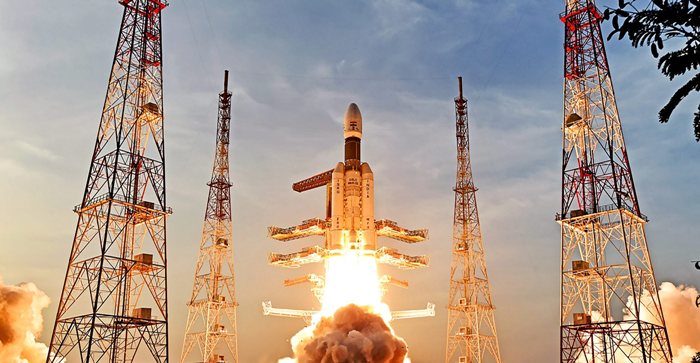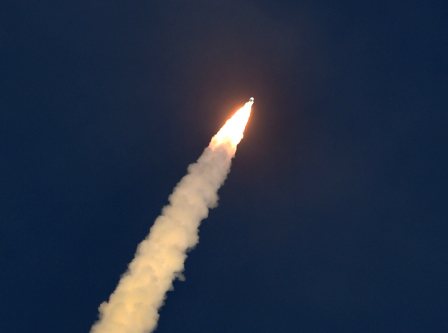
GSLV MK3 D2 carrying the GSAT-29 communication satellite, takes off from Satish Dhawan Space Centre, in Sriharikota, Wednesday, Nov. 14, 2018. Image credit: ISRO Photo via PTI.
SRIHARIKOTA, AP (PTI): The Indian Space Research Organisation has set a 'target' of achieving the country's ambitious manned mission to space by 2021, with the first unmanned programme of 'Gaganyaan' planned for December 2020, the space agency's chief K Sivan said Wednesday.
Prime Minister Narendra Modi had announced in his Independence Day address that India will attempt to send an astronaut to space by 2022 on board 'Gaganyaan'.
If successful, India would be the fourth nation to achieve the feat.
"The mission team is on track and already the work is going on," Sivan said after the successful launch of communication satellite GSAT 29 onboard GSLV-MkIII-D2 here.
"The first unmanned mission of Gaganyaan team we are planning for December 2020, to have the first human in space mission by December 2021. This is the target we are setting (for ourselves)," he said.
Later talking to reporters, the ISRO Chairman said the space agency was planning to have two unmanned missions before the human mission was launched.
"We are planning to have two unmanned missions. Third one will be manned mission. First, we will follow all the parameters and if it does not work, we will fly the second unmanned mission. Once it gets confirmed, we will go for human mission," he said.
'Gaganyaan', proposed by the prime minister on August 15, is a "very fantastic mission, a great gift he has given to all of us as a work," Sivan said.
Asked about the agenda of the manned mission, Sivan said the first mission was to take a human into space.
"They will be orbiting for 5-7 days and carrying out scientific experiments and then they will be brought back safely. This process demonstrates India's capability to launch (a) human in space," he said.
The ISRO Chairman had earlier said technologies that would help in sending an Indian astronaut to space - like the human crew module and the environment control and life support system - have already been developed.
Sivan Wednesday described GSLV-MkIII-D2, the launch vehicle that will be used to carry an Indian astronaut to space, as "excellent, reliable, simple."
When asked where the launch of manned mission would take place, he said, "it will be happening from Sriharikota.
And for that launch we have to modify the launch pad."
 Previous Article
Previous Article Next Article
Next Article












The Indian Air Force, in its flight trials evaluation report submitted before the Defence Ministry l..
view articleAn insight into the Medium Multi-Role Combat Aircraft competition...
view articleSky enthusiasts can now spot the International Space Station (ISS) commanded by Indian-American astr..
view article